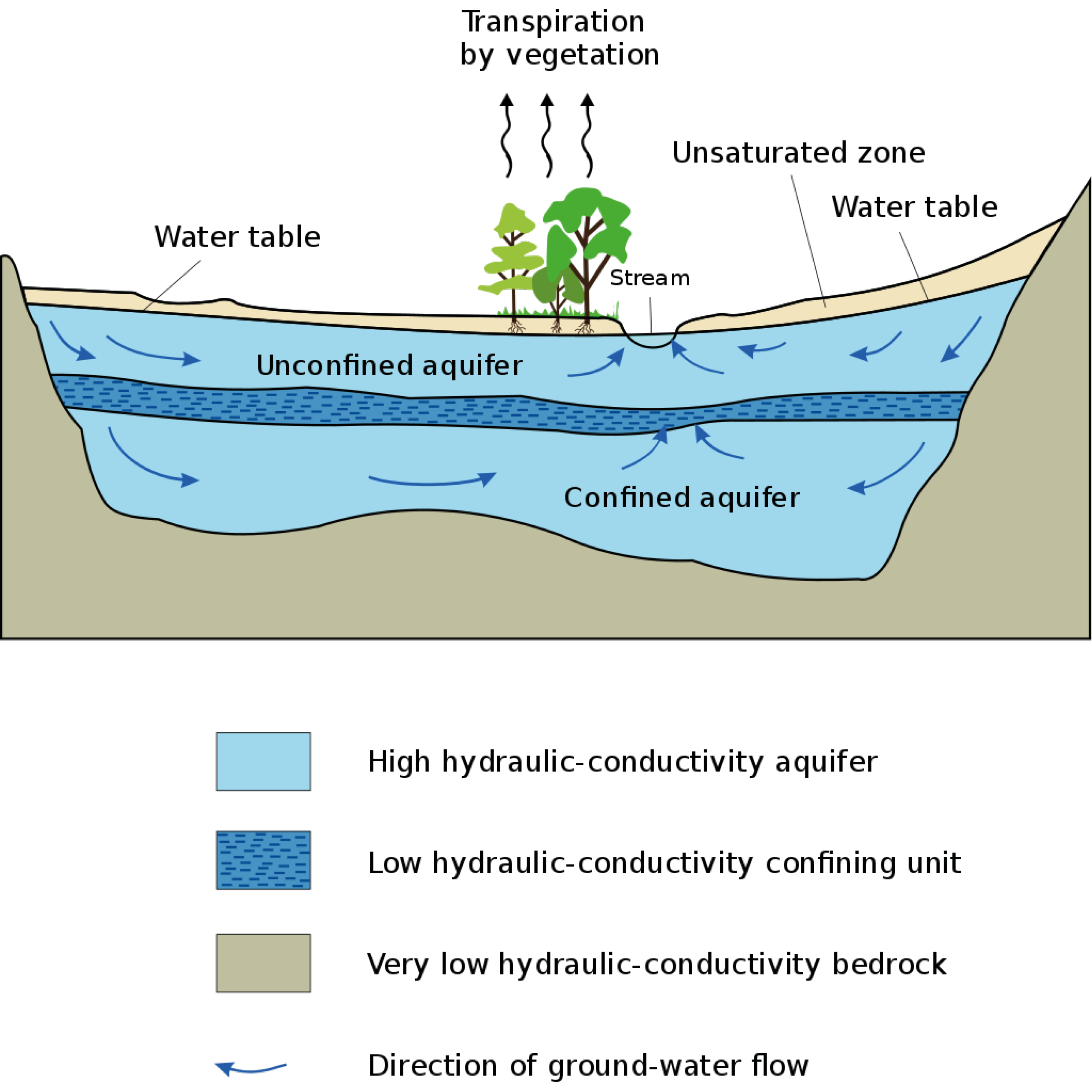
Marchfeld is an example of an aquifer in that it is a body of permeable rock can contain or transmit groundwater. The aquifer’s water movement depends on the permeability of the aquifer material. In some permeable materials, groundwater can move several meters in a day. In extreme cases, the water moves only a few centimeters in a century. Groundwater moves very slowly through relatively impermeable materials, such as clay and shale. If the groundwater is between layers of these impermeable materials, it is confined under pressure to become an artesian aquifer. An aquifer’s water, like Marchfelds, moves slowly towards lower lying places and is eventually discharged from springs, seeps into streams, or is withdrawn from the ground by wells.
97% of the earth's freshwater is stored in aquifers and groundwater is the primary source of drinking water for more than 1.5 billion people. Some of the largest cities in the developing world, such as Jakarta, Dhaka, Lima, and Mexico City, depend on aquifers for almost all their water. In rural areas, where centralized water supply systems are undeveloped, groundwater is typically the source of water.
The typical methods normally used to conceal garbage and other waste, such as landfills, septic tanks, and sewers, have become the major conduits of chemical pollution of groundwater. When aquifers are polluted, it is almost impossible to flush out contaminants from the clay layers where much of the aquifer’s water may be stored. With increases in urban population, the demand on groundwater is increasing and causing stress on the aquifers.
Many major aquifers are being drained faster than their natural rate of recharge. In some cases, areas like Marchfeld are being exploited at higher rates than previously done in the past. Marchfeld once provided water for agricultural uses but is now shifting to factory use. On average, a ton of water used in industry generates about 70 times as much profit as the same amount of water used to grow grain. Climate change has caused droughts in many aquifer areas. With the growing population and climate change, aquifers require heavy monitoring to keep the water level in balance.
97% of the earth's freshwater is stored in aquifers and groundwater is the primary source of drinking water for more than 1.5 billion people. Some of the largest cities in the developing world, such as Jakarta, Dhaka, Lima, and Mexico City, depend on aquifers for almost all their water. In rural areas, where centralized water supply systems are undeveloped, groundwater is typically the source of water.
The typical methods normally used to conceal garbage and other waste, such as landfills, septic tanks, and sewers, have become the major conduits of chemical pollution of groundwater. When aquifers are polluted, it is almost impossible to flush out contaminants from the clay layers where much of the aquifer’s water may be stored. With increases in urban population, the demand on groundwater is increasing and causing stress on the aquifers.
Many major aquifers are being drained faster than their natural rate of recharge. In some cases, areas like Marchfeld are being exploited at higher rates than previously done in the past. Marchfeld once provided water for agricultural uses but is now shifting to factory use. On average, a ton of water used in industry generates about 70 times as much profit as the same amount of water used to grow grain. Climate change has caused droughts in many aquifer areas. With the growing population and climate change, aquifers require heavy monitoring to keep the water level in balance.
Aquifer cross section.
Sources: “Aquifer,” Wikipedia (Wikimedia Foundation, April 23, 2021), https://en.wikipedia.org/wiki/Aquifer.
Sources: “Aquifer,” Wikipedia (Wikimedia Foundation, April 23, 2021), https://en.wikipedia.org/wiki/Aquifer.
- Thomas R Gatliffe, “Calibration and Reliability in Groundwater Modelling: Coping with Uncertainty,” Technometrics 44, no. 1 (2002): pp. 84-85, https://doi.org/10.1198/tech.2002.s655.
-
“Aquifers and Groundwater,” Aquifers and Groundwater, accessed March 3, 2021, https://www.usgs.gov/special-topic/water-science-school/science/aquifers-and-groundwater?qt-science_center_objects=0#qt-science_center_objects.
